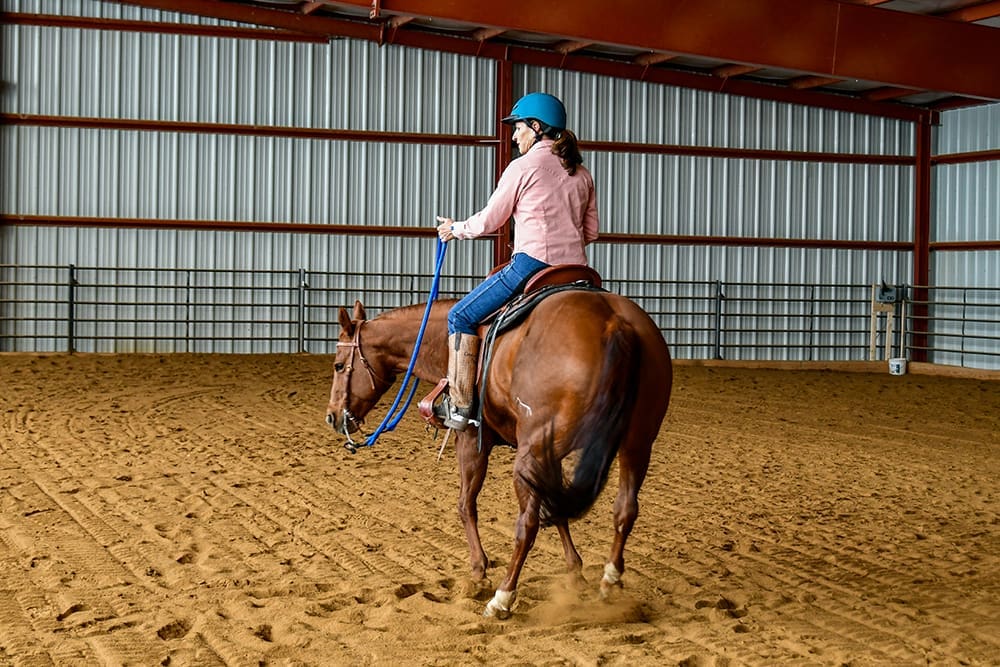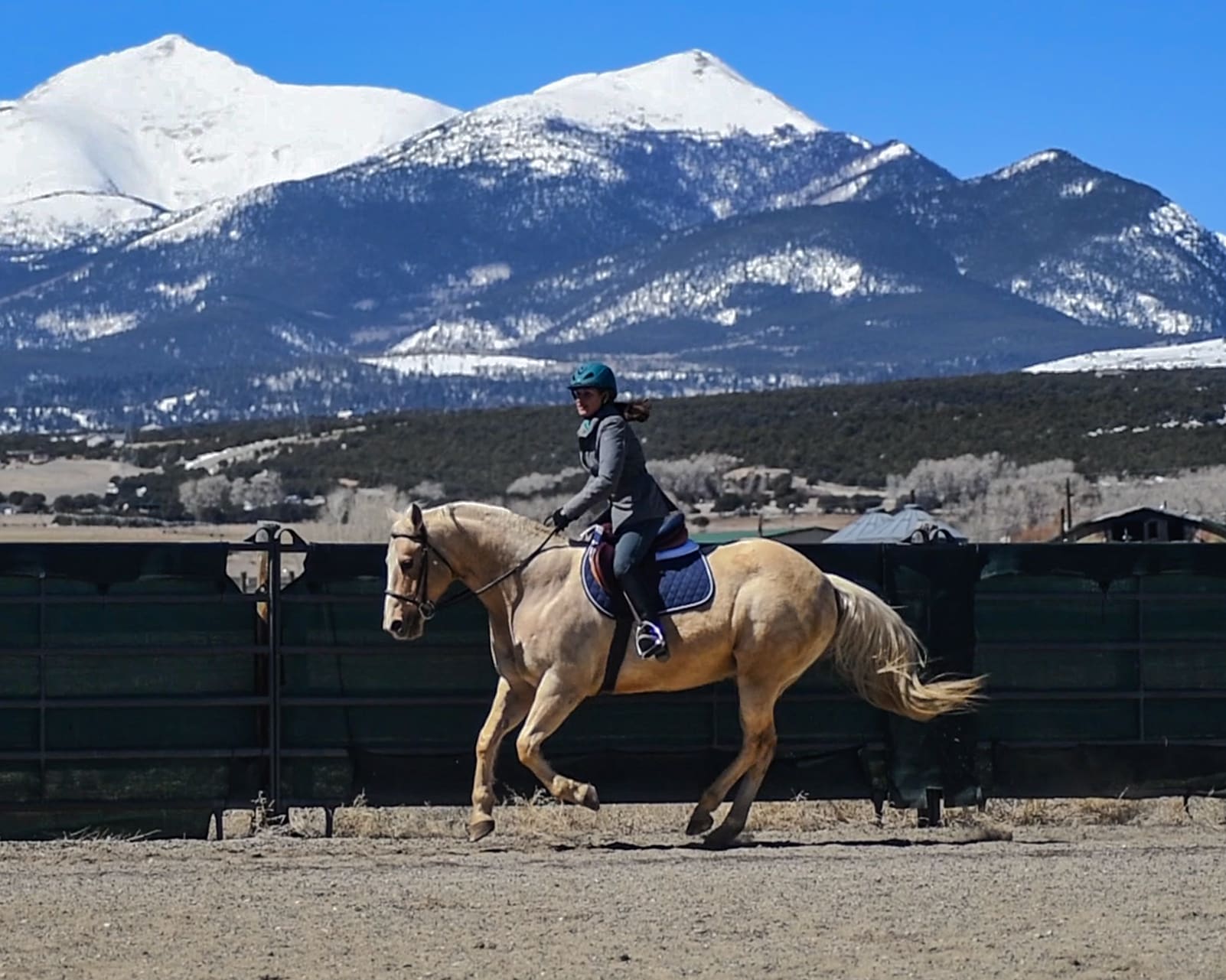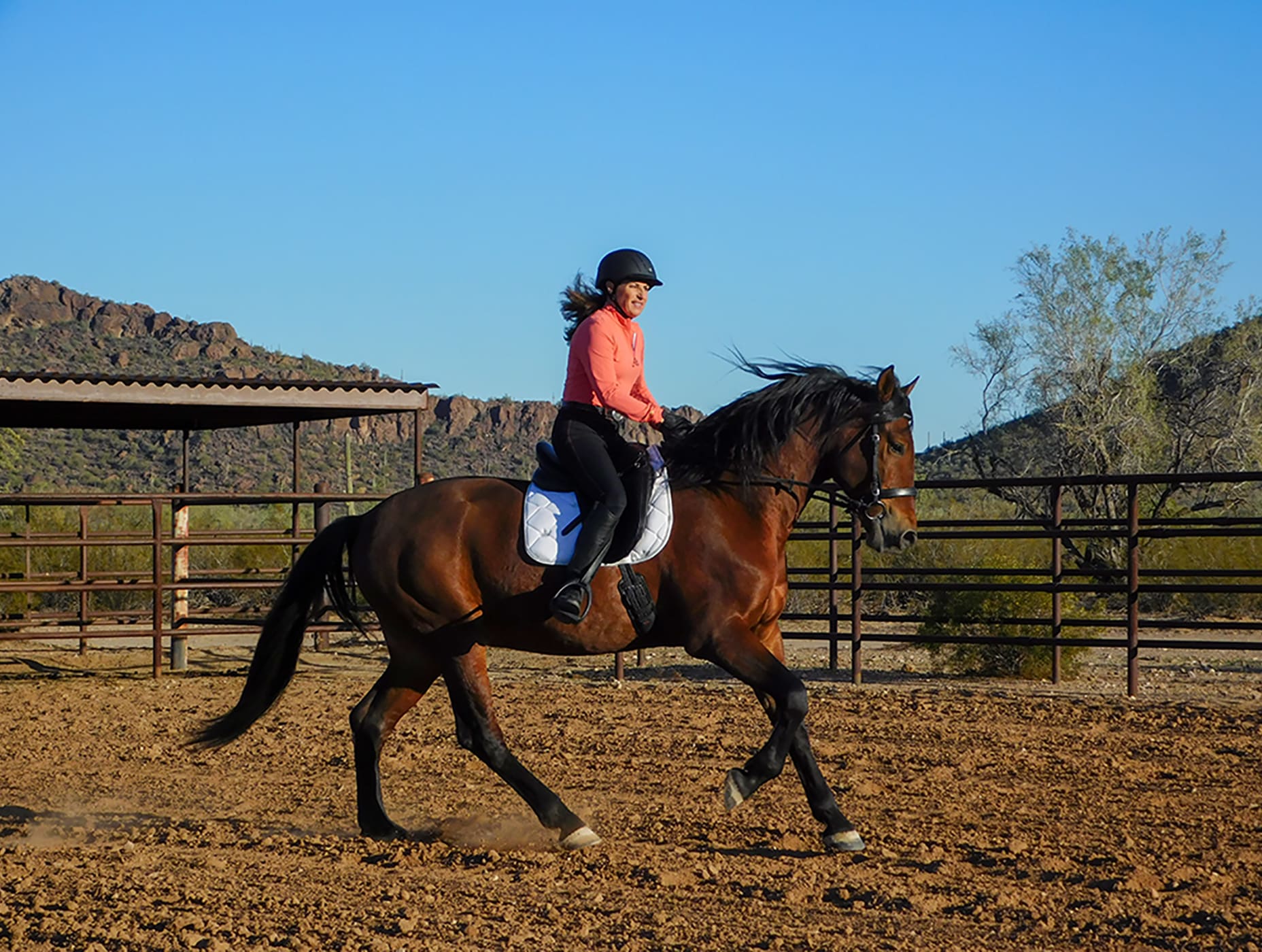Question: Dear Julie,
I have started riding my 2-year-old paint gelding. I’ve had him since he was 3 months old. He’s super gentle-almost too gentle. I have taken him out trail riding with other horses, but he needs to learn more about the lope (he zigzags all over the road). I do have an arena that I can ride in. My question is what steps do you take when training a young horse. He’s such a good-natured horse; I plan on keeping him as long as he lives. But I want him to have ground manners and good riding abilities.
Thanks,
Renee
Answer: Renee,
You are on the right track with your horse by just recognizing that the horse must go through steps and a progression to learn to canter straight and balanced. Here are the steps I go through when teaching a horse to canter/lope under saddle:
1. Don’t get in a hurry to start the canter, especially with a two year old. The old saying is that “The best way to improve the canter is to improve the trot,” and this is very true. First work on having your horse trot straight lines, hold a steady speed, and make balanced, arcing turns. Only canter when your horse is ready.
2. When you first lope a colt, you just want him to move forward. Let him move out into a hand-gallop; he doesn’t know how to balance a rider at this gait and he needs to go forward with a little speed at first to find his balance. Avoid tight turns and avoid pulling on his mouth, just move him forward at a strong gait on a giant circle (as big as your arena will allow).
3. The next step is to focus on a steady speed, not allowing the horse to break gait. Do not worry about slowing him down yet, that’ll come in later steps; do not hang onto his mouth. Also, do not let him go faster and faster or break gait.
4. Next, I’ll work on directing the horse so that he stays on the rail and moves on the path I have chosen for him and not just let him canter where he wants.
5. In the next step we’ll start working on bending on big arcing circles, keeping the horse’s nose bent in the direction of travel and his shoulder up, with an arc in his body from head to tail. In this step, the horse will learn to collect himself a little and he should be balanced well enough to slow himself down. At first when I am circling, when the horse slows down, I’ll let him go straight (which is easier for him) to encourage him to the slower gait. Loping lots of round, balanced circles will help your horse learn to go straight.
6. Next we’ll work more on transitions from trot to lope to trot to lope. This will fine tune the canter cue for the horse and teach him to distinguish lead cues. By doing lots of transitions, your horse will begin to canter even slower and steadier.
These steps will probably take weeks (if not months) to accomplish, but by the time you have gone through these steps, your horse should be cantering pretty well on the rail, on the circle and out on the trail.
Good luck!
JG
Copyright ©Julie Goodnight 2000. All Rights Reserved. No part of this website may be reproduced without owner’s express consent.



